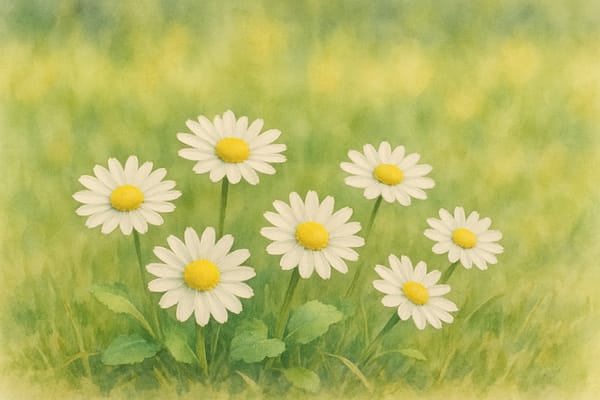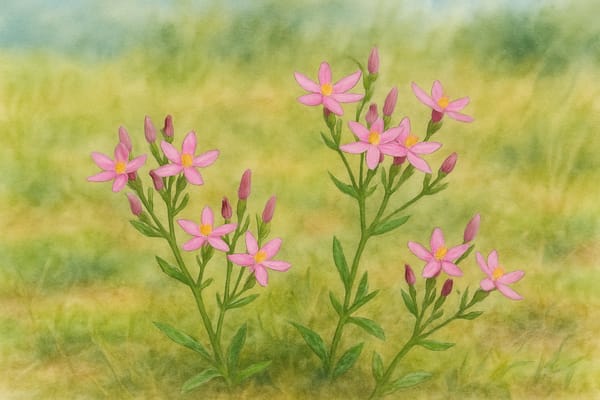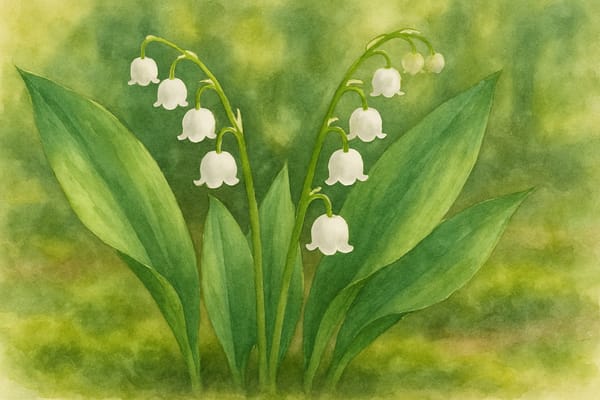The Cheerful Emblem of Innocence and Joy
Historical and Cultural Significance
The common daisy is one of Britain’s most beloved wildflowers—rooted in folklore, childhood games, and rural tradition.
Symbol of Innocence and Joy
Known as the “day’s eye” for its sun-following blooms, the daisy symbolises innocence, purity, and childhood. Featured in daisy chains, love-divination games like “he loves me, he loves me not,” and springtime rituals, it became a floral emblem of hope and simple pleasures.
Healing and Practical Uses
Used since Roman times as a wound herb, daisy juice treated cuts and bruises—earning it names like “bruisewort” and “woundwort.” It was eaten by Henry VIII for stomach ulcers and used in teas for minor ailments.
Myth, Folklore, and Sayings
Linked to Belides the nymph in Roman mythology and associated with the Virgin Mary in medieval lore, the daisy’s symbolism of new life and transformation echoes in sayings like “fresh as a daisy” and “to push up daisies.”
Cornish Connection
Though not tied to specific Cornish legends, daisies are a familiar sight in meadows, lawns, and coastal grasslands—a living link to Cornwall’s natural beauty and folkloric heritage.
Growing the Common Daisy in Coastal Gardens
| Requirement | Details |
|---|
| Light | Full sun to partial shade |
| Soil | Well-drained, sandy, gravelly, or clay; moderately fertile |
| Water | Moist but well-drained; drought-tolerant once established |
| pH | Neutral to slightly alkaline |
| Salt Tolerance | High; thrives in exposed, breezy coastal sites |
| Hardiness | Hardy in the UK |
Care and Cultivation Tips
- Site Selection:
Ideal for lawns, meadows, borders, and rockeries—choose a sunny or part-shaded spot with well-drained soil. - Sowing & Propagation:
Sow in autumn or early spring. Divide clumps after flowering for quick spreading. - Watering:
Water until established. Mature plants tolerate dry spells. - Feeding:
Avoid excess fertilizer—daisies thrive in modest soils and too much feed may reduce flowering. - Pruning & Deadheading:
Mow or deadhead regularly to prolong bloom time and encourage dense growth. - Pests & Diseases:
Generally problem-free if grown in well-drained soil with good airflow.
Coastal Garden Notes
Common daisy is highly adaptable to salty air, poor soils, and wind exposure, making it a natural fit for coastal settings. Its blooms attract bees and pollinators, supporting garden biodiversity.
Summary
The common daisy stands as a timeless symbol of innocence, joy, and resilience in Cornwall and the UK. In coastal gardens, it flourishes with minimal care—offering cheerful blooms, pollinator value, and a living connection to centuries of folklore, tradition, and rural life.











